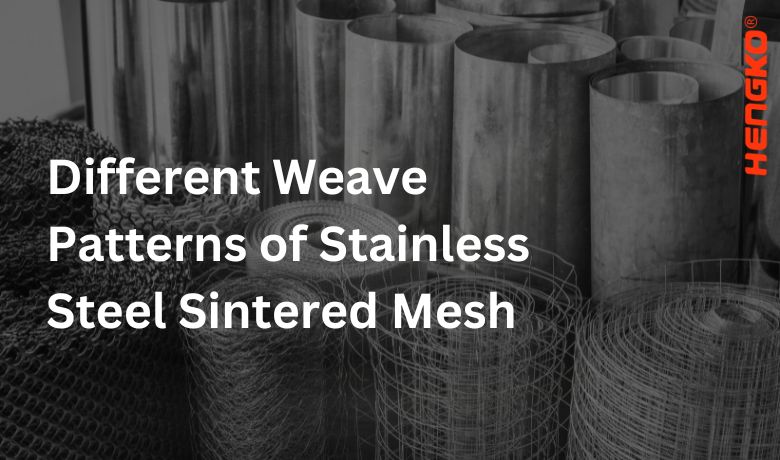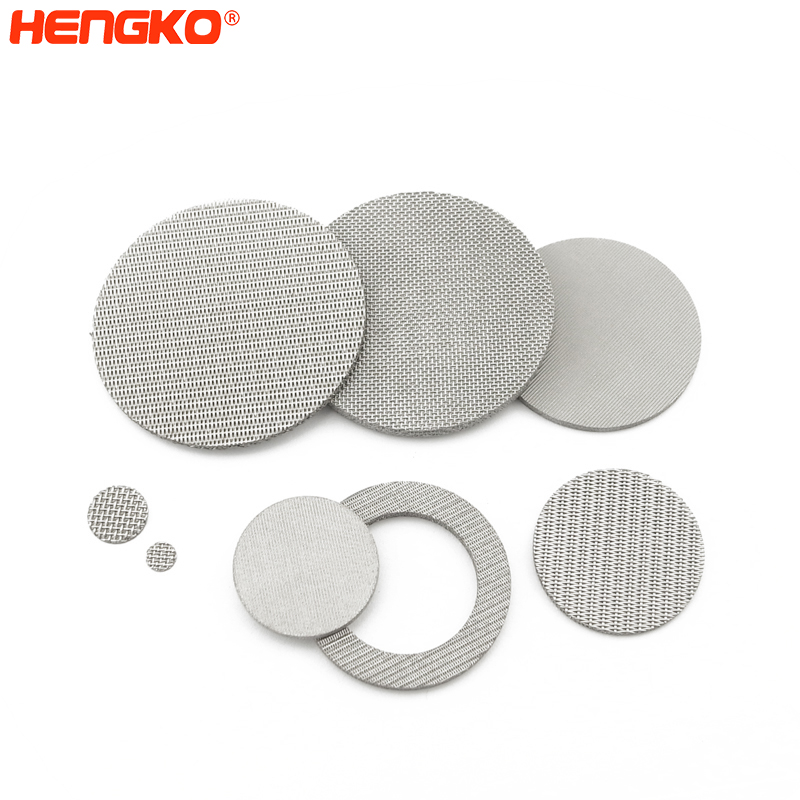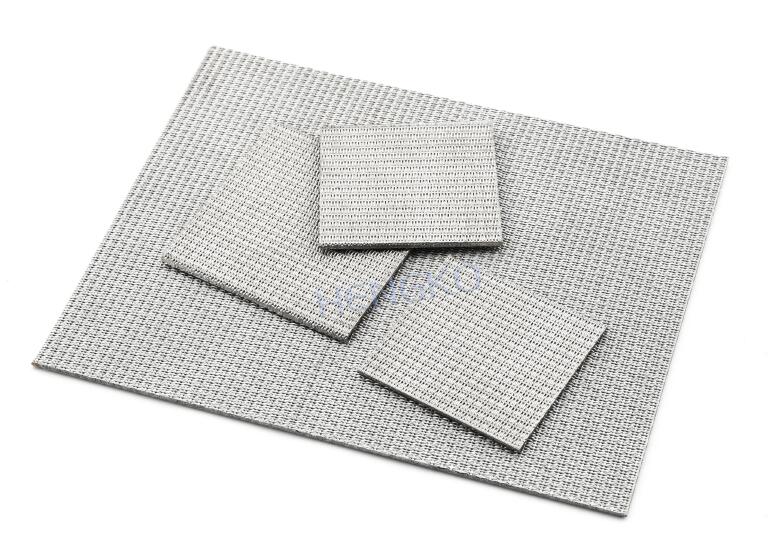A Guide to the Different Weave Patterns of Stainless Steel Sintered Mesh

What Are the Differences Between Plain Weave and Twill Weave Stainless Steel Sintered Mesh?
Plain weave and twill weave are two different types of weaving patterns used to create stainless steel sintered mesh. Plain weave is the simplest type of weave, and it is created by passing each weft wire over one warp wire and then under the next warp wire. Twill weave is a more complex weave, and it is created by passing each weft wire over two warp wires and then under the next two warp wires.
The main difference between plain weave and twill weave is the strength of the mesh. Plain weave mesh is less strong than twill weave mesh because the weft wires are not as tightly interlocked. This makes plain weave mesh more susceptible to tearing and damage. However, plain weave mesh is also less expensive than twill weave mesh.
Twill weave mesh is more expensive than plain weave mesh because it is stronger and more durable. Twill weave mesh is also more resistant to tearing and damage. This makes twill weave mesh a better choice for applications where strength and durability are important, such as in the construction industry and the automotive industry.
Here is a table that summarizes the key differences between plain weave and twill weave stainless steel sintered mesh:
| Feature | Plain Weave | Twill Weave |
|---|---|---|
| Weave pattern | Over one, under one | Over two, under two |
| Strength | Less strong | More strong |
| Durability | Less durable | More durable |
| Cost | Less expensive | More expensive |
| Applications | Screening, filtration, protection | Construction, automotive, etc. |
HENGKO stainless steel sintered mesh adopt multi-layer metal weave mesh, is a new filtration material with high mechanical strength and overall rigidity which is made of multilayer wire woven mesh through special lamination pressing and vacuum sintering. Not only it deals with the low strength, the poor rigidity and an unstable mesh shape of common metal mesh, but also reasonable matching and design to the material pore size, penetrating performance and strength feature.
HENGKO sintered mesh filter can be used in aviation, aerospace, petroleum, chemical, metallurgy, machinery, pharmaceuticals, food, synthetic fibers, environmental protection and other industrial fields such as filtration and purification, gas-solid, liquid-solid and gas-liquid separation, divergent cooling, uniform gas distribution, Noise reduction, noise reduction, etc.
There are many weave methods of stainless steel sintered mesh filter. The weave processed of sintered mesh is complicated but important. For it depends on the precision and filtration efficiency of sintered mesh.
Plain weave stainless steel sintered mesh: A plain weave is the process of pulling the weft thread (horizontal thread) over the first warp thread (vertical thread), then under the second, over the third, and so on until
you get to the end of the warp threads. It mainly used in industrial and construction industry screening sand and the protective of Machinery accessories. The weave feature is multiple crossings, strong structure,
high flatness, good air permeability, tight weave structure, uniform pore size. SUS 304 316 have advantage of high temperature resistance, corrosion resistance, strong durability and so on.
Trill weave stainless steel sintered mesh filter: Twill weave warp and weft specifications can be the same or different, two up and two down cross weaving. Its weave feature is rough surface and large weave thickness, tight structure and obvious using the feature. Compared with plain weave, it more durable and wear resistance but pore size is more worst. It is mainly used in petroleum, Chemical industry, electroplating and other industries, and can be used as mud mesh, screen mesh., etc.
In short, plain weave and trill weave has its own advantage and application.
Compared with traditional plain weave, trill weave stainless steel sintered mesh filter is larger than that of the plain stainless steel sintered filter mesh system, and the filtering function is better than that of the plain weave, and the sintering mesh strength of the twill system is larger than the sintering mesh of the plain weave system, the wear resistance is better.
HENGKO is the one of best supplier of the micro-sintered stainless steel filters and high-temperature porous metal filters in global. We have many kinds of sizes, specifications and types product for your choose, multi process and complicated filtering products also can be customized as your requirement.
How to Choose Weave Patterns of Stainless Steel and Sintered Mesh
There are a few factors to consider when choosing the weave pattern of stainless steel and sintered mesh. These include:
1. Strength: The weave pattern affects the strength of the mesh. Plain weave mesh is less strong than twill weave mesh because the weft wires are not as tightly interlocked. This makes plain weave mesh more susceptible to tearing and damage. However, plain weave mesh is also less expensive than twill weave mesh.
Here is a table that summarizes the key factors to consider when choosing the weave pattern of stainless steel and sintered mesh:
| Factor | Consideration |
|---|---|
| Strength | Plain weave mesh is less strong than twill weave mesh. |
| Durability | Twill weave mesh is more durable than plain weave mesh. |
| Cost | Plain weave mesh is less expensive than twill weave mesh. |
| Application | Plain weave mesh is often used for screening and filtration applications, while twill weave mesh is often used for construction and automotive applications. |
Ultimately, the best way to choose the weave pattern of stainless steel and sintered mesh is to consider your specific needs and requirements.


